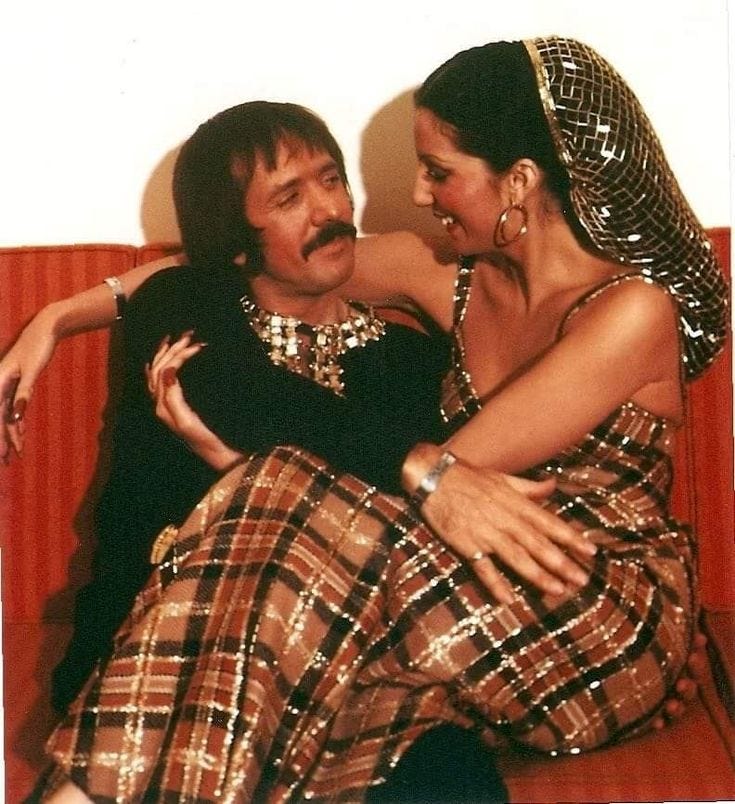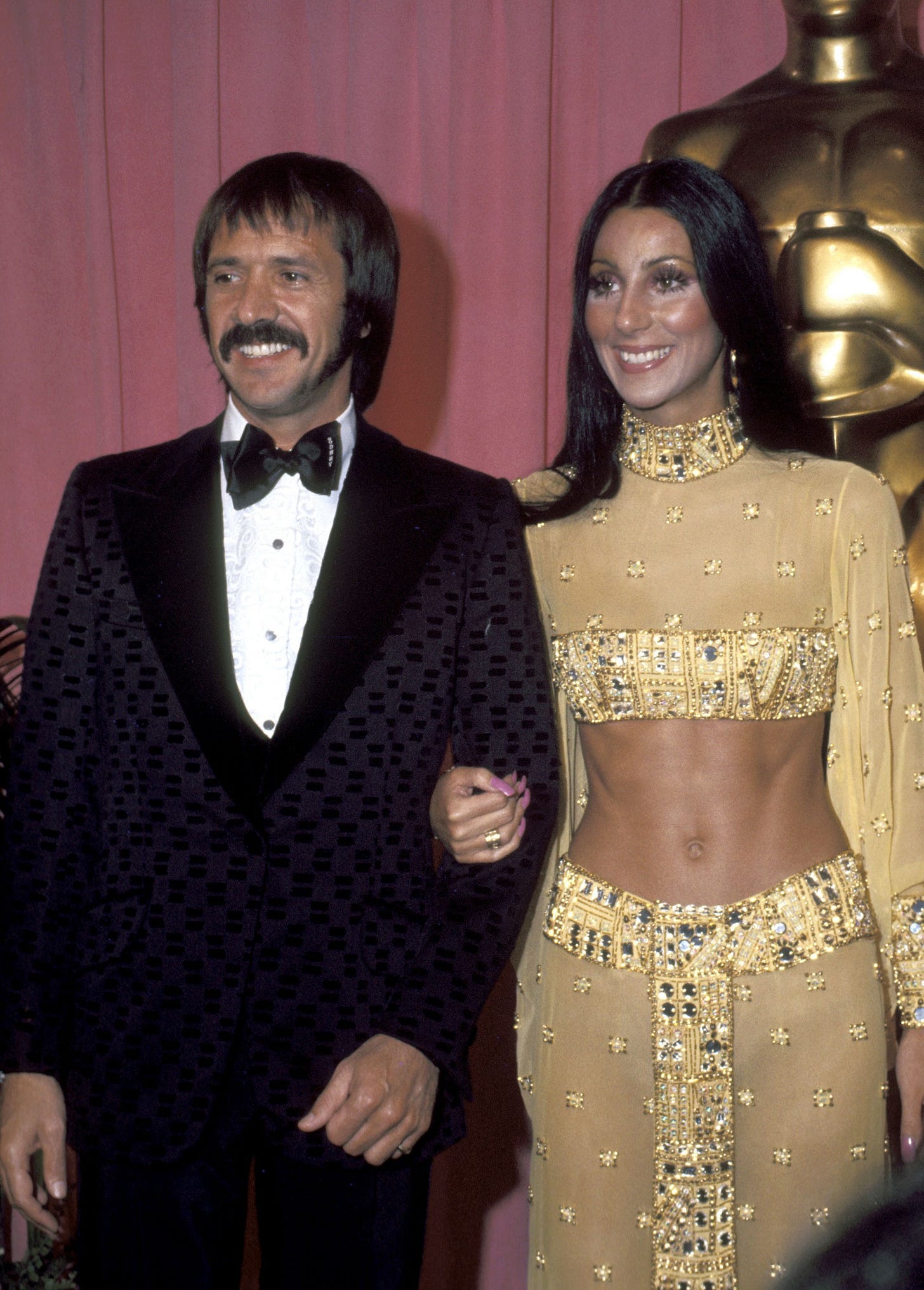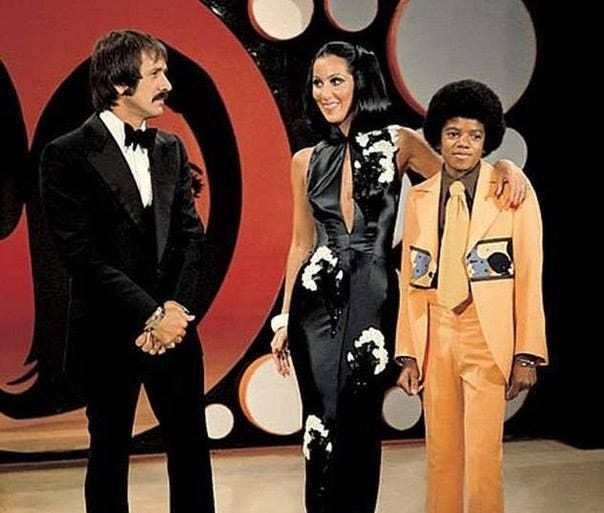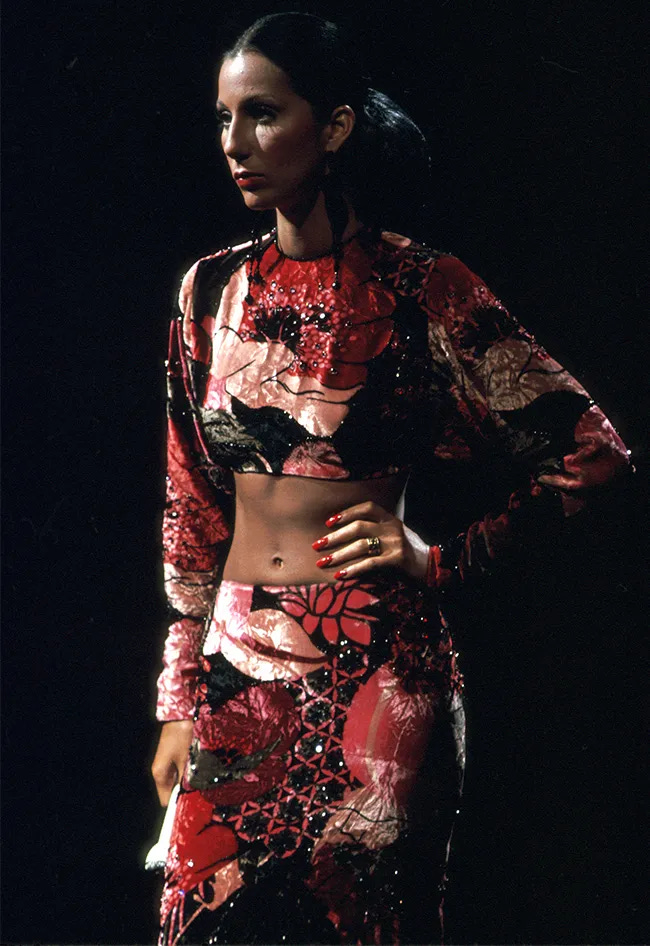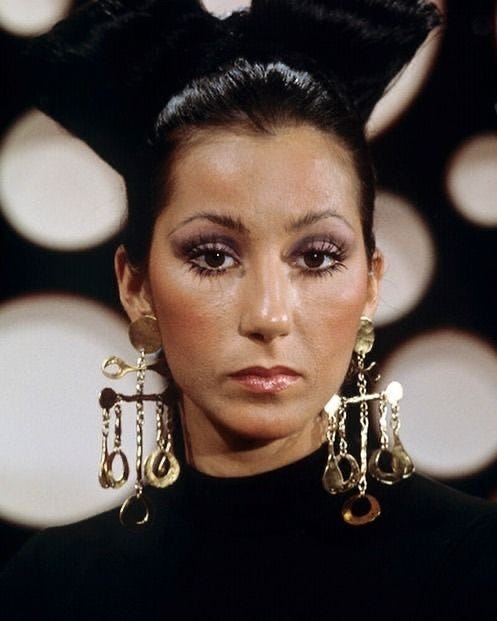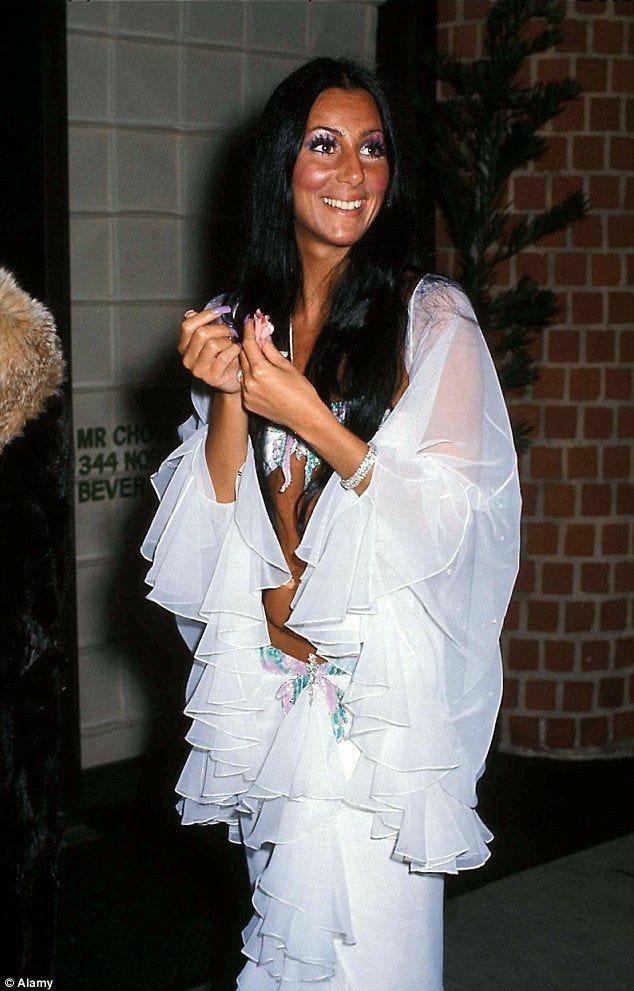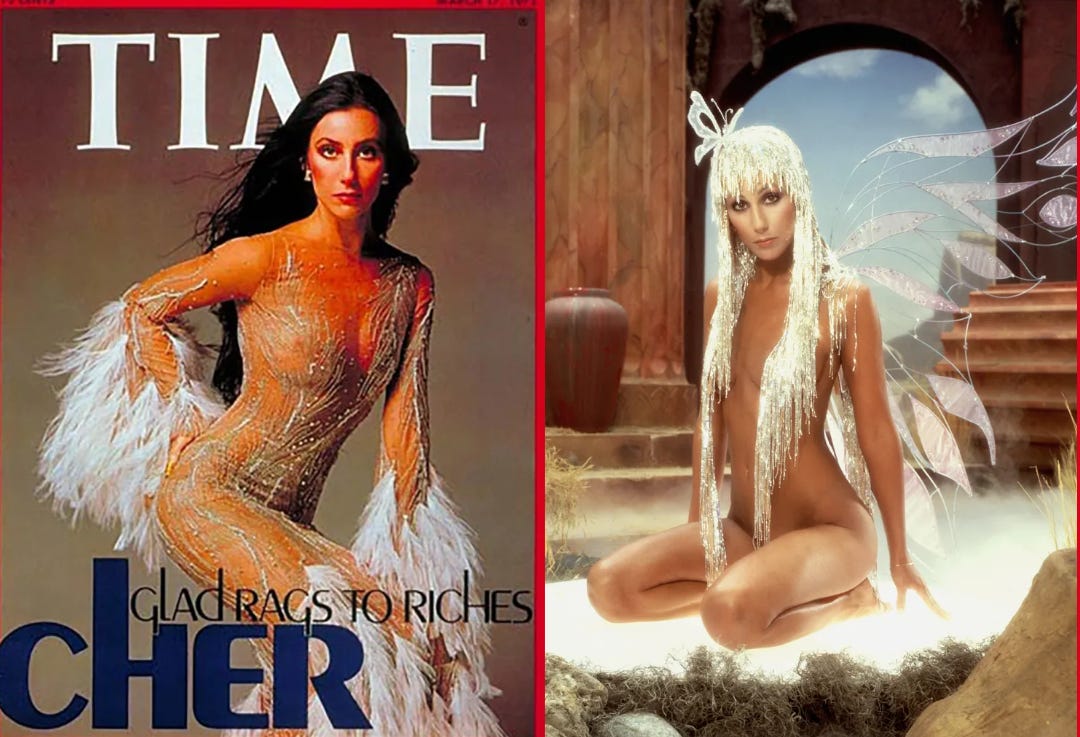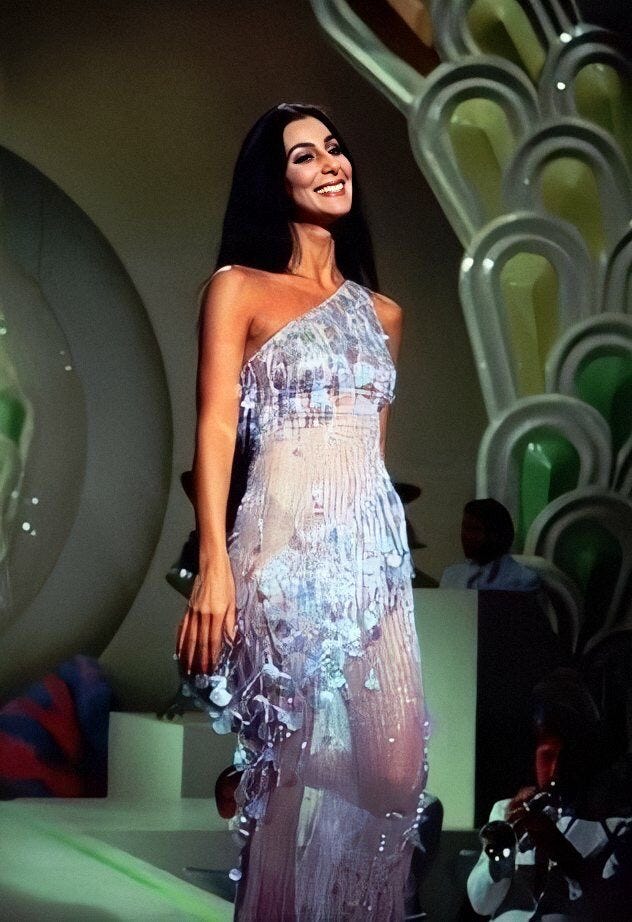Cher, the Original It Girl
How the 70s became her defining decade and all of her incredible looks ☆
I was first introduced to Cher as a little girl watching my mom get ready in Armenia, we had a boombox and Believe and Heart of Stone were on constant repeat.
As a grew older, my fascination with the dazzling women in sequence grew too. I was especially fond of her Armenian heritage. If you grew up Armenian, you knew how rare it was to witness the stardom of someone from your own background. Armenians have contributed a lot to society however there are very few international stars and Cher was one of ours.
Cher, born Cherilyn Sarkisian on May 20, 1946 in El Centro, California to parents John Sarkisian and Georgia Holt. Her background is Armenian and Irish-Cherokee. At age 16, she moved to Los Angeles where she met Sonny Bono (27), a musician and producer. He became her mentor, collaborator and eventual husband. That age gap is staggering but not uncommon as Elvis and Priscilla also had a similar age gap. Perhaps it was normalized during this time in music but they both did eventually divorce their geriatric significant others.
Sonny and Cher became synonymous with the counterculture movement of the 1960’s. Their quirky style and music resonated with young audiences but their 1965 hit “I Got You Babe” launched their career as Sonny & Cher. By the late ‘60s, their popularity waned which caused Cher to rethink her career. The 1970s were transformative for Cher, solidifying her as a solo artist, television star and fashion icon.
After the decline of Sonny & Cher’s musical success, Cher embarked on a solo career. Her distinctive contralto voice and emotionally resonant ballads gained traction. She had several hits including “Gypsys, Tramps & Thieves” (1971) which was her first No.1 as a solo artist and a cultural touchstone. “Half-breed” (1973) which explored her mixed heritage and “Dark Lady” (1974) which cemented her solo star career and was another No. 1.
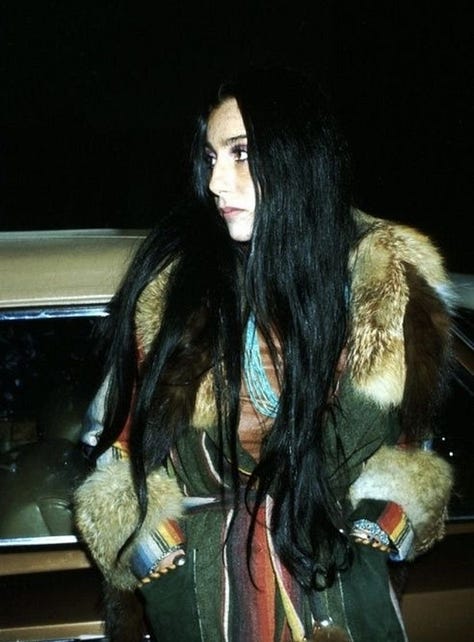
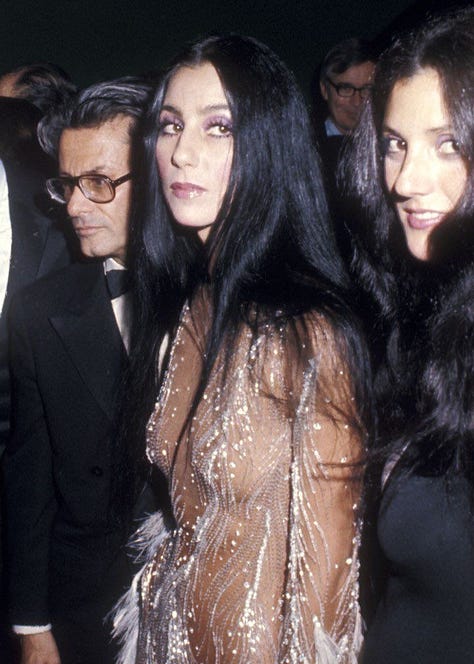
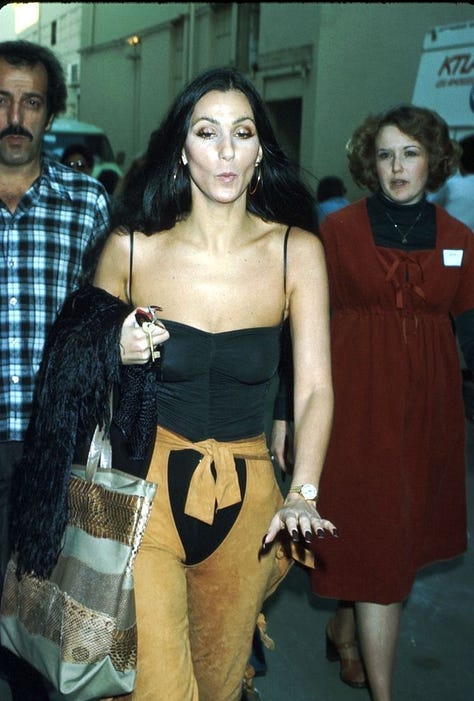
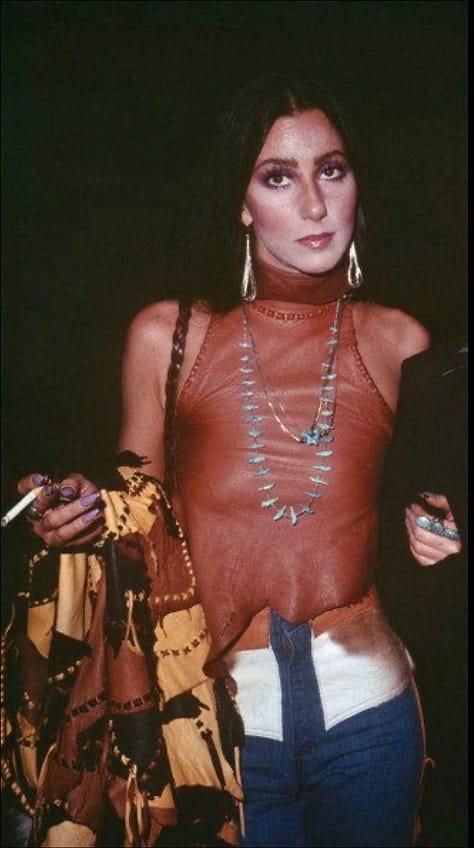

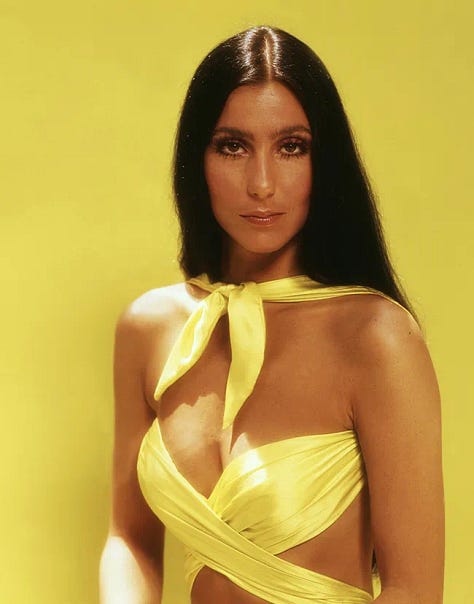
After a lull in their combined music career, The Sonny & Cher Comedy Hour (1971 -1974) established Cher’s career in Television. Showcasing her quick wit, humor and fashion sense, making her an undeniable star.
Each episode featured performances by Sonny & Cher, Cher solo and sometimes guest artists. The musical numbers were often elaborately staged, with Cher’s stunning outfits stealing the spotlight.
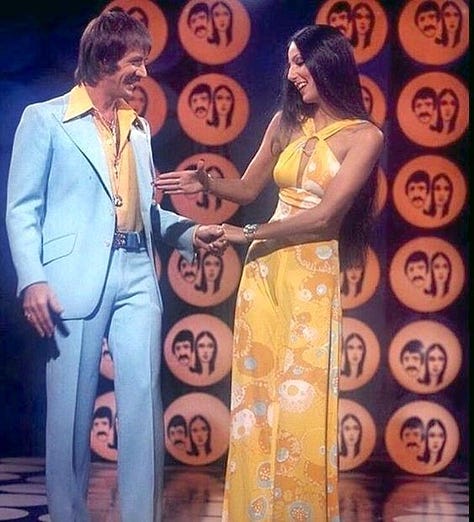
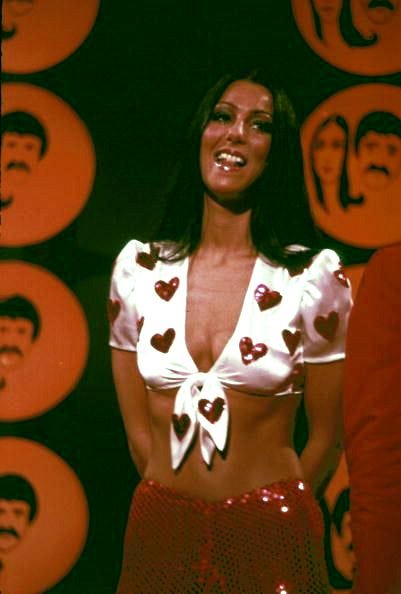

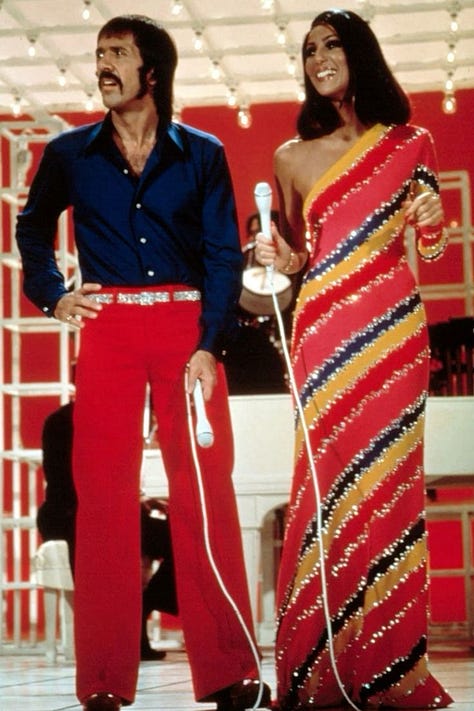

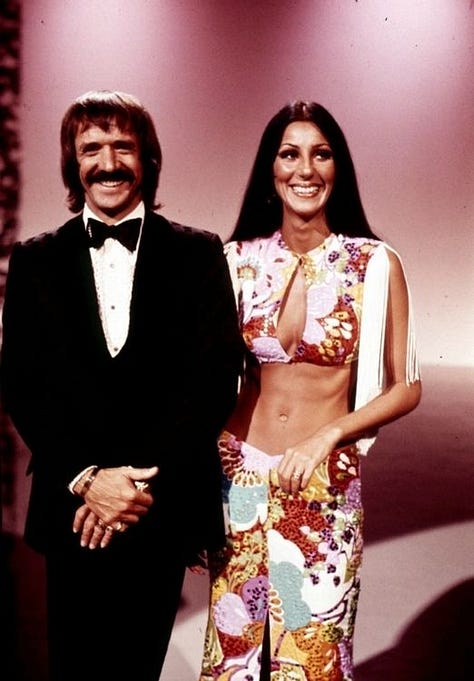
After her divorce from Sonny (1975), she launched The Cher Show (1975-1976) and while short-lived it established her as a household name beyond music. Cher was one of the few women in the 1970s to successfully juggle music, television and personal branding. As a women with mixed heritage, she became a role model for embracing one’s identity in a predominantly white entertainment industry. Her independence and career resilience resonated with the feminist movement of the era. She proved that women could reinvent themselves and thrive on their own terms.
We can’t discuss Cher’s fashion revolution and establishment as a fashion icon without paying homage to the fashion designer, Bob Mackie. Who was responsible for the iconic looks including but not limited to all of the costumes seen in the VAMP segment of Sonny & Cher Comedy Hour.
“We never thought about her outfits as fashion, but a way to perfectly portray famous characters from history, Queen Elizabeth I, or maybe the snake from the Garden of Eden, or why not Olive Oyl, Popeye’s best gal? There was no end to what characters [Cher] could or would play!” - Direct quote from Bob Mackie, pulled from Harpar’s Bazaar article “Cher and Bob Mackie on Over 60 Years of Iconic Looks”
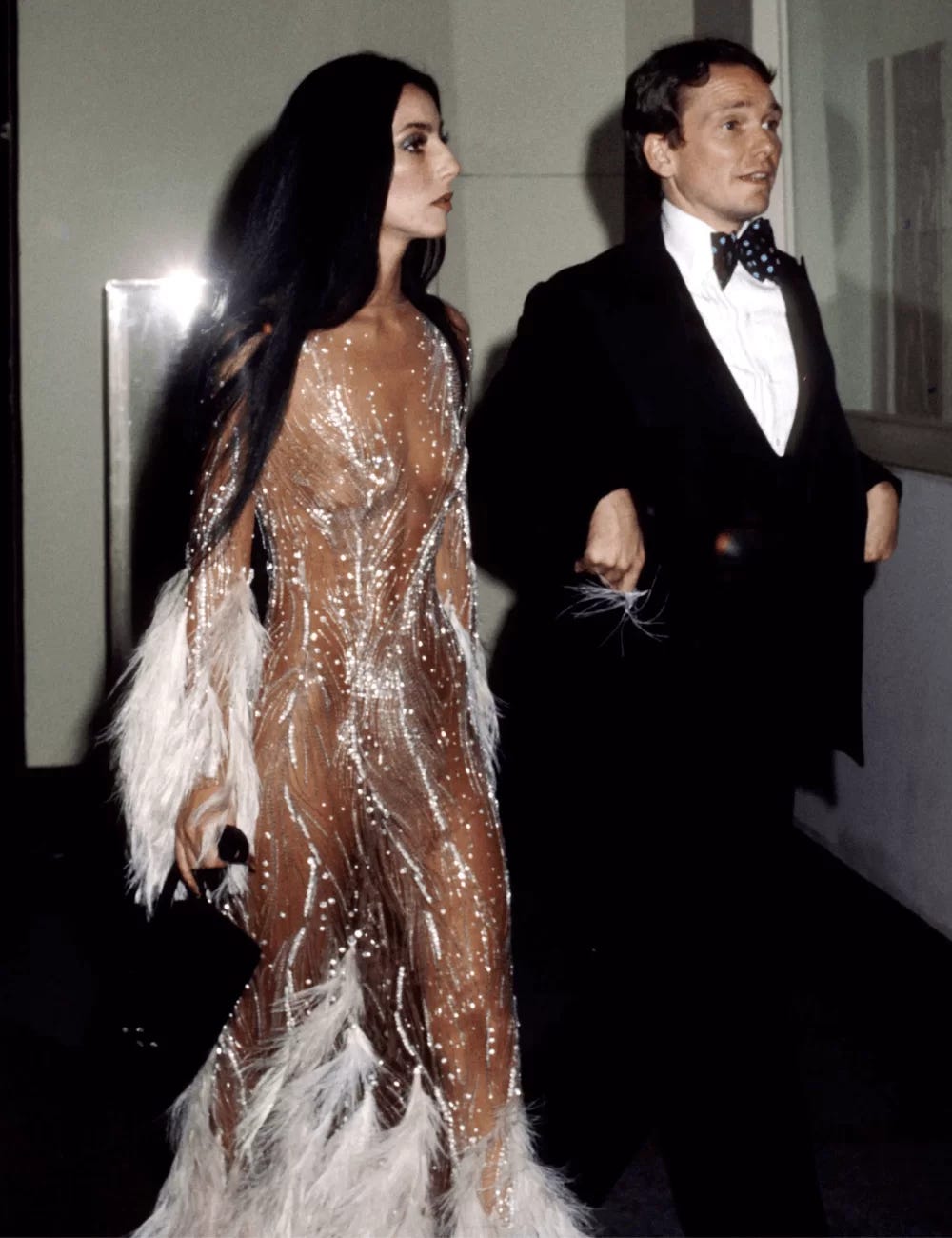
As my title suggests, Cher was the it girl of the 70’s. She became a walking revolution in fashion, redefining what it meant to be glamorous, edgy and unapologetically individualistic. Collaborating with designer Bob Mackie, she embraced an aesthetic that fused Old Hollywood grandeur with a daring, futuristic edge. Her style wasn’t about looking good — it was a statement of self-expression, defiance, and liberation.
Cher rejected the understated norms of the time in favor of extravagance and risk. Her looks weren’t just clothes—they were moments of performance art, each outfit telling it’s own story. She defied the traditional “girl-next-door” beauty standard that dominated the era. With her sharp cheekbones, almond-shaped eyes and long black hair, she embraced her exotic features which stemmed from her Armenian heritage. At the time when women were expected to conform to Eurocentric ideals, Cher’s bold acceptance of her unique appearance was a powerful act of self-empowerment.
Her wardrobe inspired generations of artists and designers. From the daring cut-outs seen on modern runways to the maximalist red-carpet looks seen on our favorite stars, Cher’s influence remains unmistakable.
Cher’s legacy from the 70’s transcends her music, fashion, and television accomplishments. She remains a trailblazer who carved her own path and shattered the barriers of conventionality. She taught the world that reinvention is not just possible— it’s essential. Her story encourages to embrace change, own your unique identity and fearlessly pursue your dreams.
Cher is more than a figure of nostalgia or pop culture history. She’s a pioneer who used her platform to redefine what it meant to be a woman, an artist, and a public figure. She proved that beauty, success, and identity are not one-size-fits-all—and that defying expectations is the key to creating a lasting legacy. As we reflect and continue to celebrate her influence, let her story serve as a reminder. True icons don’t just reflect the culture, they shape it.
I hope you enjoyed reading this post, I certainly loved writing it. To show your support, please share and subscribe. It’s free!
Let’s stay connected:
Lots of love,
Vee





